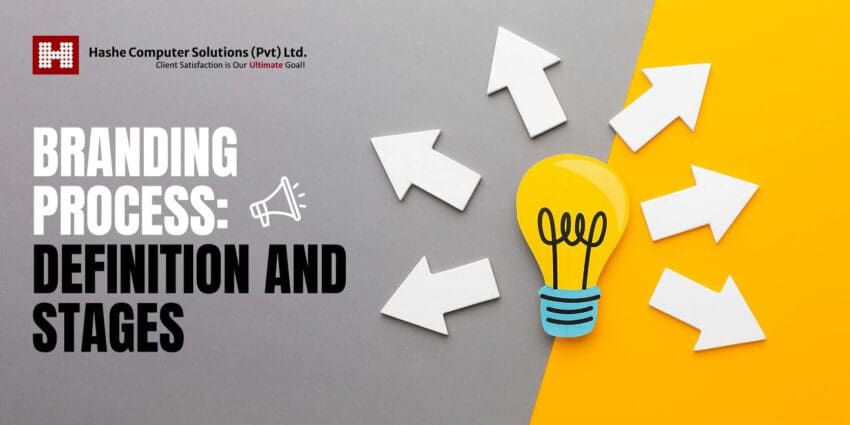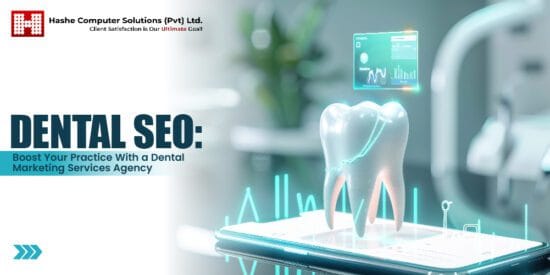
Nowadays, brand identity is the top priority for businesses everywhere, irrespective of their size, target market, or niche. In addition to helping them make a strong first impression and stand out from the competition, it is crucial because it creates unbreakable bonds between businesses and their clients, who become loyal supporters.
However, developing a brand is not that easy. Effective corporate branding goes beyond the conventional designing of a stunning logo, creative typeface, and witty tagline. It is more than that, in actuality. It is a complex and dynamic process that uses a variety of distribution channels to establish connections with members of a target group, provides them with care, and, if they choose to leave, brings them back.
It entails adherence to a well-established branding technique that includes critical branding stages and regularly altering your brand to match your client’s demands, requirements, and expectations due to market fluctuations.
This article will explore the stages of the branding process. So let’s get started.
What is a Brand and Brand Identity?
Understanding brand and brand identity is essential before defining the brand process. Although they are frequently used interchangeably, they are not the same thing.
The brand is an advertising term that defines a business, establishes it in the minds of consumers, molds people’s perceptions, and gives a competitive advantage. A business develops its brand identity, or set of visible components, to project the ideal picture of the company and boost brand recognition. It can be a font, mascot, slogan, flier, brochure, digital newsletter, website design, brochure, and anything else, including stationery and advertising.
What is a Branding Process?
Brand identity provides several benefits that can potentially transform your company’s fate and set you on a successful path regardless of age, niche, scale, or market. However, to fully realize its potential, it is necessary to follow the entire branding procedure.
Building and refining a brand to satisfy the current market needs, establishing a solid reputation, and extending the life cycle of the business are all part of the branding process. It is an organized approach that uses methodology and a brand strategy template to achieve marketing objectives.
The branding design process entails a sequence of steps and tasks to establish a foundation on which the brand identity would be built during the entire life cycle. Its goals are to increase the company’s lifespan, offer it a competitive edge over rivals, unleash potential, develop general advancement, and improve overall progress via high-quality services, goods, and brand image.
What are the Stages of the Branding Process?
There are the following five stages in the branding process.
- Conducting Research
- Developing Strategy
- Designing Identity
- Creating Touchpoints
- Managing Assets
Let’s look at the stages in detail.
Conducting Research
Research is necessary to assess the brand’s existing position and determine which route it should take to maximize its potential.
Conducting research allows you to define the company’s vision, objectives, goals, and values and ask key management about their vision for the brand. It helps research stakeholders’ demands and perceptions and perform a brand and competitive audit.
So, the first step is to grasp the business’s mission, vision, target markets, brand values, personality, strengths, limitations, and unique selling points. Several questions directed at key stakeholders and key management can help achieve this. You can directly ask their opinion and thoughts about the company’s vision, markets, etc., but we usually ask indirect questions from others.
You may ask questions from employees, customers, suppliers, or the community for feedback. The responses to these questions can be analyzed and combined with other research to build the brand strategy.
An essential component of brand research is the brand audit, which lets you examine what’s working and what needs improvement. The brand audit examines the brand identity, which includes the logo, tagline, colors, and typefaces, as well as all marketing materials and online identities.
The competitive audit is a data collection procedure that examines competitor brands, visual identities, and perceptions. The goal is to be able to answer questions like, “Why should consumers choose our services or products over theirs?” and “How can we appear to be different?”
After conducting the necessary research, one can write a report to help with future brand strategy development. While the brand does not always have a breakthrough due to research, experts in the field of branding can read between the lines, draw connections, and spot opportunities.
Developing Strategy
A brand strategy is crucial in determining the brand’s successful route.
Creating a brand strategy requires an amalgamation of critical thinking and creative imagination to build a plan that works for both the organization internally and its customers externally.
When designing a new brand strategy, it is critical to examine the firm both in terms of how you want it to be perceived and from the customers’ perspective.
A brand strategy should clarify vision, target markets, and competitive edge along with brand values, personality, promise, and proportion.
Usually, there’s no need for an entirely new brand strategy. Maybe some components are already established and ready to go; they simply need to be combined to form a cohesive brand and message that can go to the design phase.
Narrow the Focus
A good brand has a specific focus, yet many businesses err by attempting to be everything to everyone. We seek out the big idea, the gold, in our role as brand architects. Most likely, it has always existed but has been concealed. Bringing in an outside consultant and letting them talk to management, employees, clients, and so on frequently highlights the brand’s essence and narrows it down to one primary focus: what your brand can become recognized for.
Positioning
Brand positioning that convinces consumers that the company can deliver on its promises and is better than its rivals is the most effective. You have to tell them to “buy this from us because…” since they are inundated with options when it comes to purchases. After completing the study in stage 1, you will understand why they might choose to purchase from you.
Naming
Another aspect of designing a brand strategy is creating or defining the company name and tagline, if one is needed. A lot of effort, consideration, creativity, and research goes into naming a business; it is a pretty complicated process. It is crucial to consider carefully before renaming a brand because it is a significant asset.
Designing Identity
After reading the analysis and strategy report, designers will transform the strategy into an artistic expression of the brand by applying their knowledge, intuition, creativity, and inventiveness after reading the analysis and strategy report.
Creating a corporate identity will take time and patience, and it will begin with the development of multiple concepts that will eventually be refined into a single final idea. Every designer and design agency will operate differently.
When creating a brand identity, we carefully consider several critical aspects to ensure they effectively reflect the values and characteristics outlined in the plan.
The design process starts with designing a logo, the brand’s graphical representation. The designers focus on colors, typefaces, icons, and shapes to produce something distinctive, captivating, and representative of the brand.
Another purpose of developing a comprehensive brand identity is to provide the brand with a look and feel. Any brand’s marketing material should allow you to identify the brand even if the logo is hidden—you should be able to tell by the colors, photography, font, styling, etc.
It is necessary to test the logo on actual documents, including business cards, letterheads, websites, pamphlets, folders, etc., to ensure that it functions as a component of the whole visual identity. That may help determine whether it will operate on different scales and various materials – on screen or in print.
Creating Touchpoints
This step entails developing the identity established in stage 3 across a variety of touchpoints or any point of interaction between a company and its clients.
These touchpoints include websites, business cards, letterheads, brochures, signage, product or packaging design, advertising, vehicles, and uniforms.
Developing a consistent yet adaptable design for all touchpoints that accurately reflects the values identified in the strategy is a crucial component of this branding approach. The final design must function both online and offline, on big and small scales, and in every possible market. In simple terms, it is developing a distinct visual language that will express itself throughout all applications.
At this phase, the identity will be tested in real-world applications rather than hypothetical ones from the previous stage.
Managing Assets
Managing the brand identity assets necessitates a long-term commitment from firm owners or directors to developing and preserving the brand. A brand needs constant observation and input to succeed.
This process consists of a few crucial steps.
An External and Internal Brand Launch
To ensure that every employee is, as the saying goes, “singing from the same hymn sheet,” it is crucial to launch the brand within.
Internally, staff members must understand the significance of the brand, what it represents, what it means, and how to communicate it to consumers.
An outside launch can consist of a single event or a subdued run of advertising campaigns. The customers should always come first throughout a brand launch, and the relevant messages should be sent to them at the right moment. It is crucial to reiterate the messages multiple times.
Communicating the New Brand Identity to Clients and Staff
Significant inquiries to make are:
Who should know?
What should they know?
Why should they know?
How does the change affect them?
How will they find out?
When will they find out?
Establishing Branding guidelines
A set of branding guidelines that all employees may access helps to manage the brand and ensure applications’ consistency. Management should clearly state that everyone working for the organization must adhere to these guidelines. People can contribute to developing a more powerful brand if they cooperate and abide by the rules.
Designate Roles
Making employees feel included might help them become more invested in the company. A brand can achieve long-term success when employees embrace the organizational atmosphere and so reflect the brand’s values and personality in all they do.
Wrapping Up!
Regardless of whether you are a small business forced to compete against well-known brands with committed consumers and limitless marketing budgets, you still have a fighting chance. You can overcome all obstacles and acquire loyal customers who will generate revenue and keep your business running.
The truth is that brand design always provides its owner with a solid basis for achieving their marketing objectives and fulfilling their potential, even at the start of the trip. When executed flawlessly, it makes a strong impression, sets the business apart from its rivals, shapes the right image in the client’s minds, and leaves a lasting imprint that entices the clients to stick with the company despite market fluctuations and competition.
However, getting such outcomes is a tremendous challenge. A solid brand identity and plan are essential to see you through any pitfall. The five stages of the branding process explained in this article will help you establish a successful brand identity, guaranteeing immense business growth.
Are you looking for the best IT providers for your IT projects? Look no further than Hashe! Hashe Computer Solutions is a leading IT solutions provider that offers world-class software, mobile application, web development, and digital marketing services. Contact us for the best web design solutions!
Keep following us for more tech news!
Check out our Social Media Pages:
- Facebook: https://www.facebook.com/hasheCS/
- Instagram: @hashe_official
- LinkedIn: https://pk.linkedin.com/company/hashe-computer-solutions
- Twitter: https://twitter.com/hashe
- Youtube: https://www.youtube.com/channel/UCay7eQtwoQ3ehoIesAxHDPw
- Pinterest: https://www.pinterest.com/hashecs/
- Threads: https://www.threads.net/@hashe_official
- Behance: https://www.behance.net/hashecs
Was this helpful?
Last Modified: July 31, 2024 at 9:47 am
41 views















